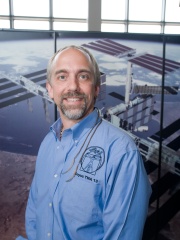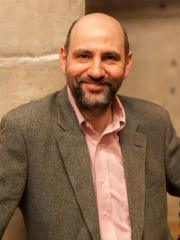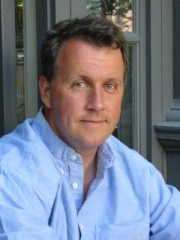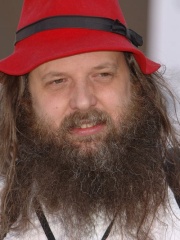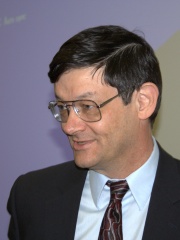
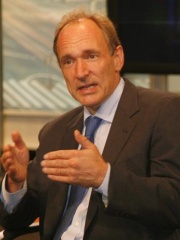
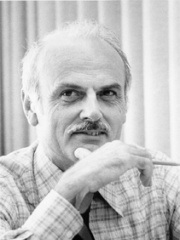
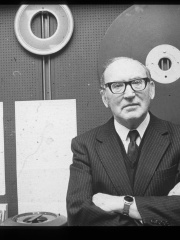
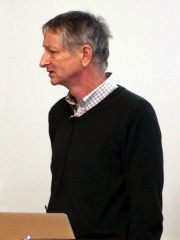
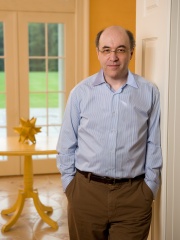
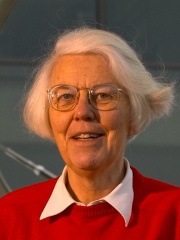
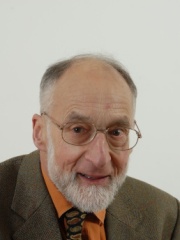
The Most Famous
COMPUTER SCIENTISTS from United Kingdom
This page contains a list of the greatest British Computer Scientists. The pantheon dataset contains 201 Computer Scientists, 18 of which were born in United Kingdom. This makes United Kingdom the birth place of the 2nd most number of Computer Scientists.
Top 10
The following people are considered by Pantheon to be the top 10 most legendary British Computer Scientists of all time. This list of famous British Computer Scientists is sorted by HPI (Historical Popularity Index), a metric that aggregates information on a biography’s online popularity. Visit the rankings page to view the entire list of British Computer Scientists.

1. Alan Turing (1912 - 1954)
With an HPI of 83.83, Alan Turing is the most famous British Computer Scientist. His biography has been translated into 146 different languages on wikipedia.
Alan Mathison Turing (; 23 June 1912 – 7 June 1954) was an English mathematician, computer scientist, logician, cryptanalyst, philosopher and theoretical biologist. Turing was highly influential in the development of theoretical computer science, providing a formalisation of the concepts of algorithm and computation with the Turing machine, which can be considered a model of a general-purpose computer. He is widely considered to be the father of theoretical computer science and artificial intelligence. Born in London, Turing was raised in southern England. He graduated in maths from King's College, Cambridge, and in 1938, earned a maths PhD from Princeton University. During the Second World War, Turing worked for the Government Code and Cypher School at Bletchley Park, Britain's codebreaking centre that produced Ultra intelligence. He led Hut 8, the section responsible for German naval cryptanalysis. He devised techniques for speeding the breaking of German ciphers, including improvements to the pre-war Polish bomba method, an electromechanical machine that could find settings for the Enigma machine. Turing played a crucial role in cracking intercepted messages that enabled the Allies to defeat the Axis powers in many crucial engagements, including the Battle of the Atlantic. After the war, Turing worked at the National Physical Laboratory, where he designed the Automatic Computing Engine, one of the first designs for a stored-program computer. In 1948, Turing joined Max Newman's Computing Machine Laboratory at the Victoria University of Manchester, where he helped develop the Manchester computers and became interested in mathematical biology. He wrote on the chemical basis of morphogenesis and predicted oscillating chemical reactions such as the Belousov–Zhabotinsky reaction, first observed in the 1960s. Despite these accomplishments, Turing was never fully recognised during his lifetime because much of his work was covered by the Official Secrets Act. Turing was prosecuted in 1952 for homosexual acts. He accepted hormone treatment, a procedure commonly referred to as chemical castration, as an alternative to prison. Turing died on 7 June 1954, aged 41, from cyanide poisoning. An inquest determined his death as suicide, but the evidence is also consistent with accidental poisoning. Following a campaign in 2009, British prime minister Gordon Brown made an official public apology for "the appalling way [Turing] was treated". Queen Elizabeth II granted a pardon in 2013. The term "Alan Turing law" is used informally to refer to a 2017 law in the UK that retroactively pardoned men cautioned or convicted under historical legislation that outlawed homosexual acts. Turing has an extensive legacy with statues and many things named after him, including an annual award for computer science innovations. He appears on the current Bank of England £50 note, which was released on 23 June 2021 to coincide with his birthday. A 2019 BBC series, as voted by the audience, named him the greatest person of the 20th century.

2. Tim Berners-Lee (1955 - )
With an HPI of 68.25, Tim Berners-Lee is the 2nd most famous British Computer Scientist. His biography has been translated into 133 different languages.
Sir Timothy John Berners-Lee (born 8 June 1955), also known as TimBL, is an English computer scientist best known as the inventor of the World Wide Web, the HTML markup language, the URL system, and HTTP. He is a professorial research fellow at the University of Oxford and a professor emeritus at the Massachusetts Institute of Technology (MIT). Berners-Lee proposed an information management system on 12 March 1989 and implemented the first successful communication between a Hypertext Transfer Protocol (HTTP) client and server via the Internet in mid-November. He devised and implemented the first Web browser and Web server and helped foster the Web's subsequent explosive development. He is the founder and director of the World Wide Web Consortium (W3C), which oversees the continued development of the Web. He co-founded (with Rosemary Leith) the World Wide Web Foundation. In April 2009, he was elected as Foreign Associate of the National Academy of Sciences. Berners-Lee is a senior researcher and holder of the 3Com founder's chair at the MIT Computer Science and Artificial Intelligence Laboratory (CSAIL). He is a director of the Web Science Research Initiative (WSRI) and a member of the advisory board of the MIT Center for Collective Intelligence. In 2011, he was named as a member of the board of trustees of the Ford Foundation. He is a founder and president of the Open Data Institute and is currently an advisor at social network MeWe. In 2004, Berners-Lee was knighted by Queen Elizabeth II for his pioneering work. He received the 2016 Turing Award "for inventing the World Wide Web, the first web browser, and the fundamental protocols and algorithms allowing the Web to scale". He was named in Time magazine's list of the 100 Most Important People of the 20th century and has received a number of other accolades for his invention.

3. Edgar F. Codd (1923 - 2003)
With an HPI of 60.90, Edgar F. Codd is the 3rd most famous British Computer Scientist. His biography has been translated into 41 different languages.
Edgar Frank "Ted" Codd (19 August 1923 – 18 April 2003) was an English computer scientist who, while working for IBM, invented the relational model for database management, the theoretical basis for relational databases and relational database management systems. He made other valuable contributions to computer science, but the relational model, a very influential general theory of data management, remains his most mentioned, analyzed and celebrated achievement.

4. Maurice Wilkes (1913 - 2010)
With an HPI of 55.16, Maurice Wilkes is the 4th most famous British Computer Scientist. His biography has been translated into 37 different languages.
Sir Maurice Vincent Wilkes (26 June 1913 – 29 November 2010) was an English computer scientist who designed and helped build the Electronic Delay Storage Automatic Calculator (EDSAC), one of the earliest stored program computers, and who invented microprogramming, a method for using stored-program logic to operate the control unit of a central processing unit's circuits. At the time of his death, Wilkes was an Emeritus Professor at the University of Cambridge.
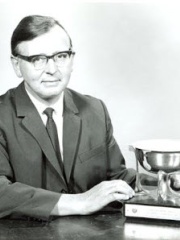
5. James H. Wilkinson (1919 - 1986)
With an HPI of 50.49, James H. Wilkinson is the 5th most famous British Computer Scientist. His biography has been translated into 29 different languages.
James Hardy Wilkinson FRS (27 September 1919 – 5 October 1986) was a prominent figure in the field of numerical analysis, a field at the boundary of applied mathematics and computer science particularly useful to physics and engineering.

6. Geoffrey Hinton (1947 - )
With an HPI of 49.89, Geoffrey Hinton is the 6th most famous British Computer Scientist. His biography has been translated into 21 different languages.
Geoffrey Everest Hinton (born 6 December 1947) is a British-Canadian computer scientist and cognitive psychologist, most noted for his work on artificial neural networks. From 2013 to 2023, he divided his time working for Google (Google Brain) and the University of Toronto, before publicly announcing his departure from Google in May 2023, citing concerns about the risks of artificial intelligence (AI) technology. In 2017, he co-founded and became the chief scientific advisor of the Vector Institute in Toronto. With David Rumelhart and Ronald J. Williams, Hinton was co-author of a highly cited paper published in 1986 that popularized the backpropagation algorithm for training multi-layer neural networks, although they were not the first to propose the approach. Hinton is viewed as a leading figure in the deep learning community. The dramatic image-recognition milestone of the AlexNet designed in collaboration with his students Alex Krizhevsky and Ilya Sutskever for the ImageNet challenge 2012 was a breakthrough in the field of computer vision. Hinton received the 2018 Turing Award, often referred to as the "Nobel Prize of Computing", together with Yoshua Bengio and Yann LeCun, for their work on deep learning. They are sometimes referred to as the "Godfathers of Deep Learning", and have continued to give public talks together. In May 2023, Hinton announced his resignation from Google to be able to "freely speak out about the risks of A.I." He has voiced concerns about deliberate misuse by malicious actors, technological unemployment, and existential risk from artificial general intelligence.

7. Stephen Wolfram (1959 - )
With an HPI of 48.85, Stephen Wolfram is the 7th most famous British Computer Scientist. His biography has been translated into 39 different languages.
Stephen Wolfram ( WUUL-frəm; born 29 August 1959) is a British-American computer scientist, physicist, and businessman. He is known for his work in computer algebra, and theoretical physics. In 2012, he was named a fellow of the American Mathematical Society. As a businessman, he is the founder and CEO of the software company Wolfram Research where he works as chief designer of Mathematica and the Wolfram Alpha answer engine.

8. Karen Spärck Jones (1935 - 2007)
With an HPI of 46.58, Karen Spärck Jones is the 8th most famous British Computer Scientist. Her biography has been translated into 20 different languages.
Karen Ida Boalth Spärck Jones (26 August 1935 – 4 April 2007) was a self-taught programmer and a pioneering British computer scientist responsible for the concept of inverse document frequency (IDF), a technology that underlies most modern search engines. She was an advocate for women in computer science, her slogan being, "Computing is too important to be left to men." In 2019, The New York Times published her belated obituary in its series Overlooked, calling her "a pioneer of computer science for work combining statistics and linguistics, and an advocate for women in the field." From 2008, to recognize her achievements in the fields of information retrieval (IR) and natural language processing (NLP), the Karen Spärck Jones Award is awarded to a new recipient with outstanding research in one or both of her fields.

9. Robin Milner (1934 - 2010)
With an HPI of 46.52, Robin Milner is the 9th most famous British Computer Scientist. His biography has been translated into 26 different languages.
Arthur John Robin Gorell Milner (13 January 1934 – 20 March 2010) was a British computer scientist, and a Turing Award winner.
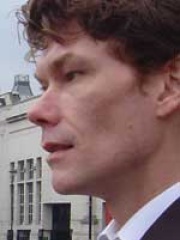
10. Gary McKinnon (1966 - )
With an HPI of 45.00, Gary McKinnon is the 10th most famous British Computer Scientist. His biography has been translated into 23 different languages.
Gary McKinnon (born 10 February 1966) is a Scottish systems administrator and hacker who was accused in 2002 of perpetrating the "biggest military computer hack of all time", although McKinnon himself states that he was merely looking for evidence of free energy suppression and a cover-up of UFO activity and other technologies potentially useful to the public. On 16 October 2012, after a series of legal proceedings in Britain, then Home Secretary Theresa May blocked extradition to the United States.
Pantheon has 18 people classified as computer scientists born between 1912 and 1976. Of these 18, 11 (61.11%) of them are still alive today. The most famous living computer scientists include Tim Berners-Lee, Geoffrey Hinton, and Stephen Wolfram. The most famous deceased computer scientists include Alan Turing, Edgar F. Codd, and Maurice Wilkes. As of April 2022, 2 new computer scientists have been added to Pantheon including Andrew Morton and Kathleen Booth.
Living Computer Scientists
Go to all Rankings
Tim Berners-Lee
1955 - Present
HPI: 68.25
Geoffrey Hinton
1947 - Present
HPI: 49.89
Stephen Wolfram
1959 - Present
HPI: 48.85
Gary McKinnon
1966 - Present
HPI: 45.00
Richard Garriott
1961 - Present
HPI: 44.06
Martin Fowler
1963 - Present
HPI: 43.78
Paul Graham
1964 - Present
HPI: 41.61
Alan Cox
1968 - Present
HPI: 40.91
Andrew Morton
1959 - Present
HPI: 40.49
Sophie Wilson
1957 - Present
HPI: 37.37
Demis Hassabis
1976 - Present
HPI: 31.96

Deceased Computer Scientists
Go to all Rankings
Alan Turing
1912 - 1954
HPI: 83.83
Edgar F. Codd
1923 - 2003
HPI: 60.90
Maurice Wilkes
1913 - 2010
HPI: 55.16
James H. Wilkinson
1919 - 1986
HPI: 50.49
Karen Spärck Jones
1935 - 2007
HPI: 46.58
Robin Milner
1934 - 2010
HPI: 46.52
Kathleen Booth
1922 - 2022
HPI: 38.71

Newly Added Computer Scientists (2022)
Go to all RankingsWhich Computer Scientists were alive at the same time? This visualization shows the lifespans of the 6 most globally memorable Computer Scientists since 1700.

